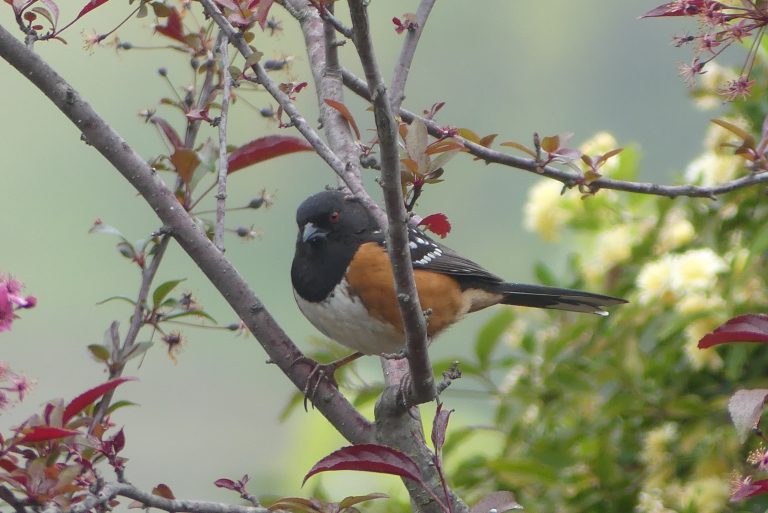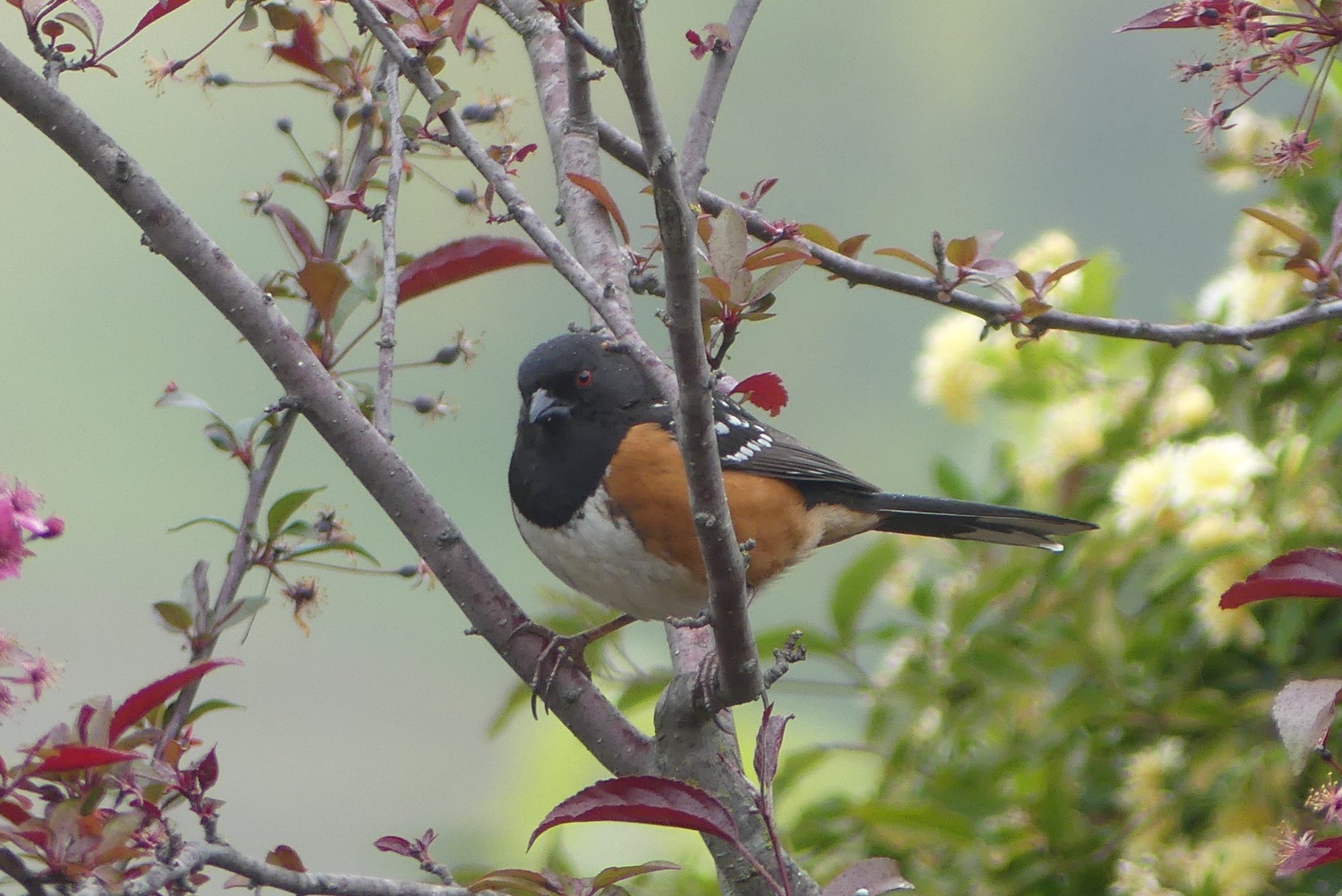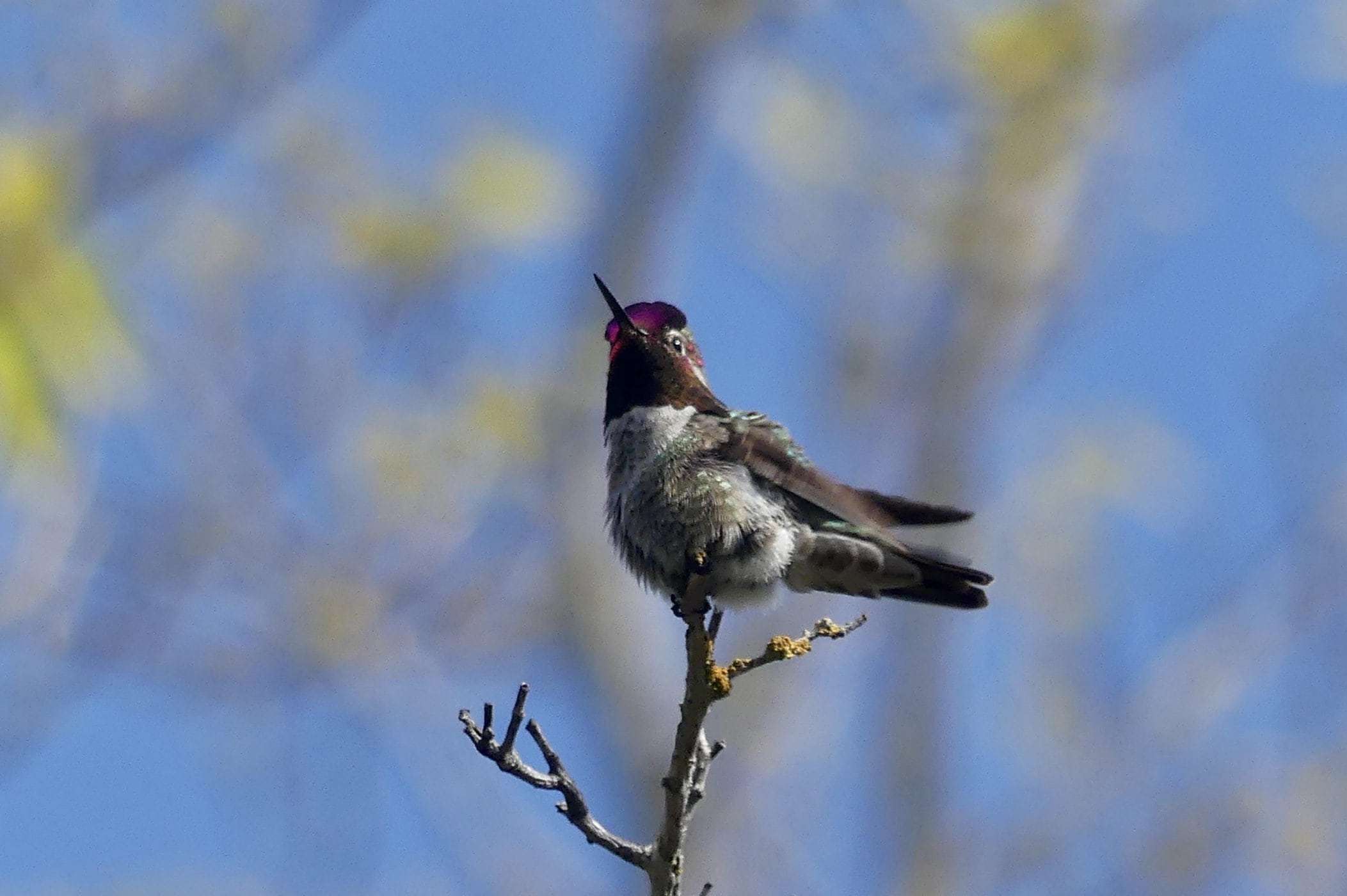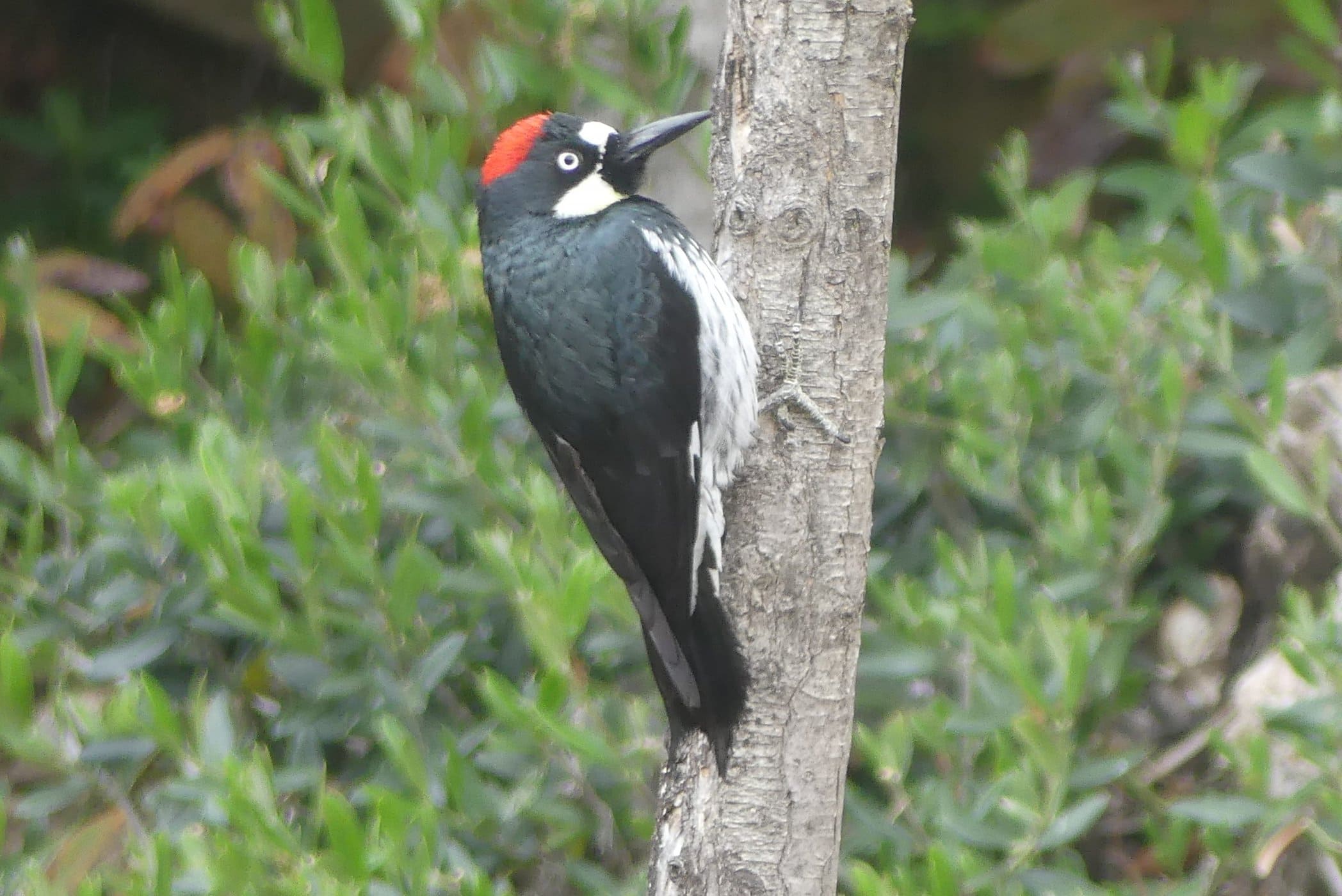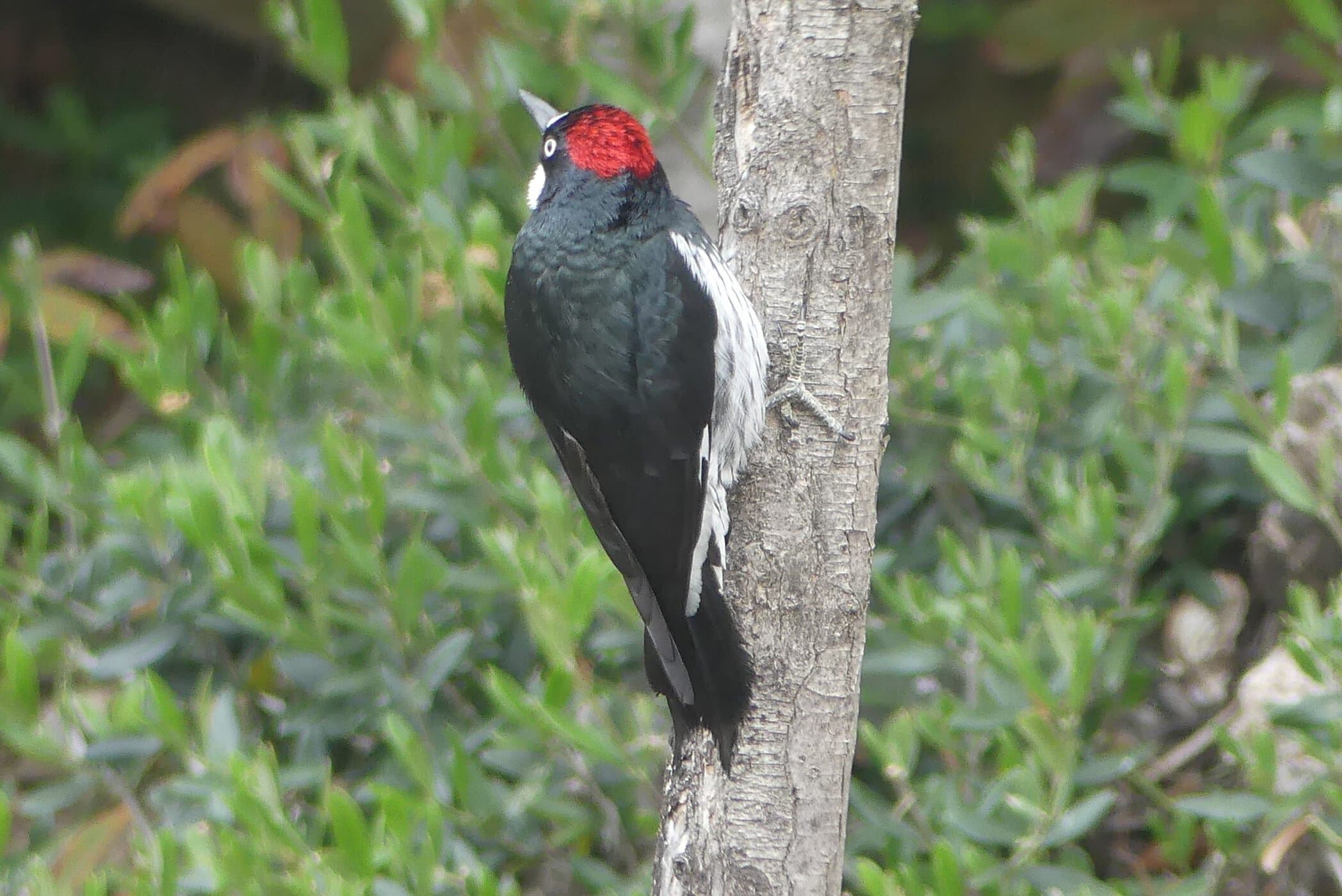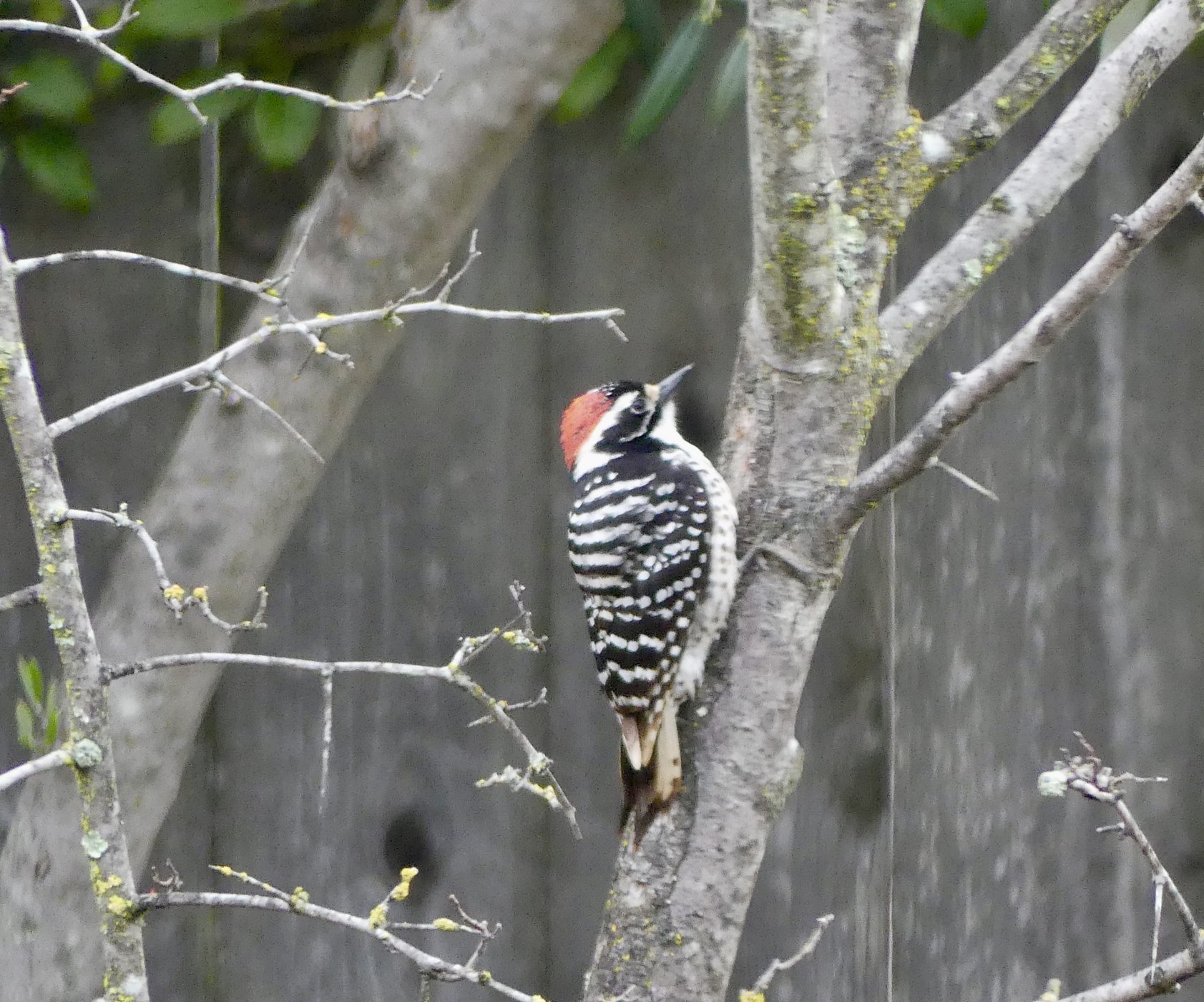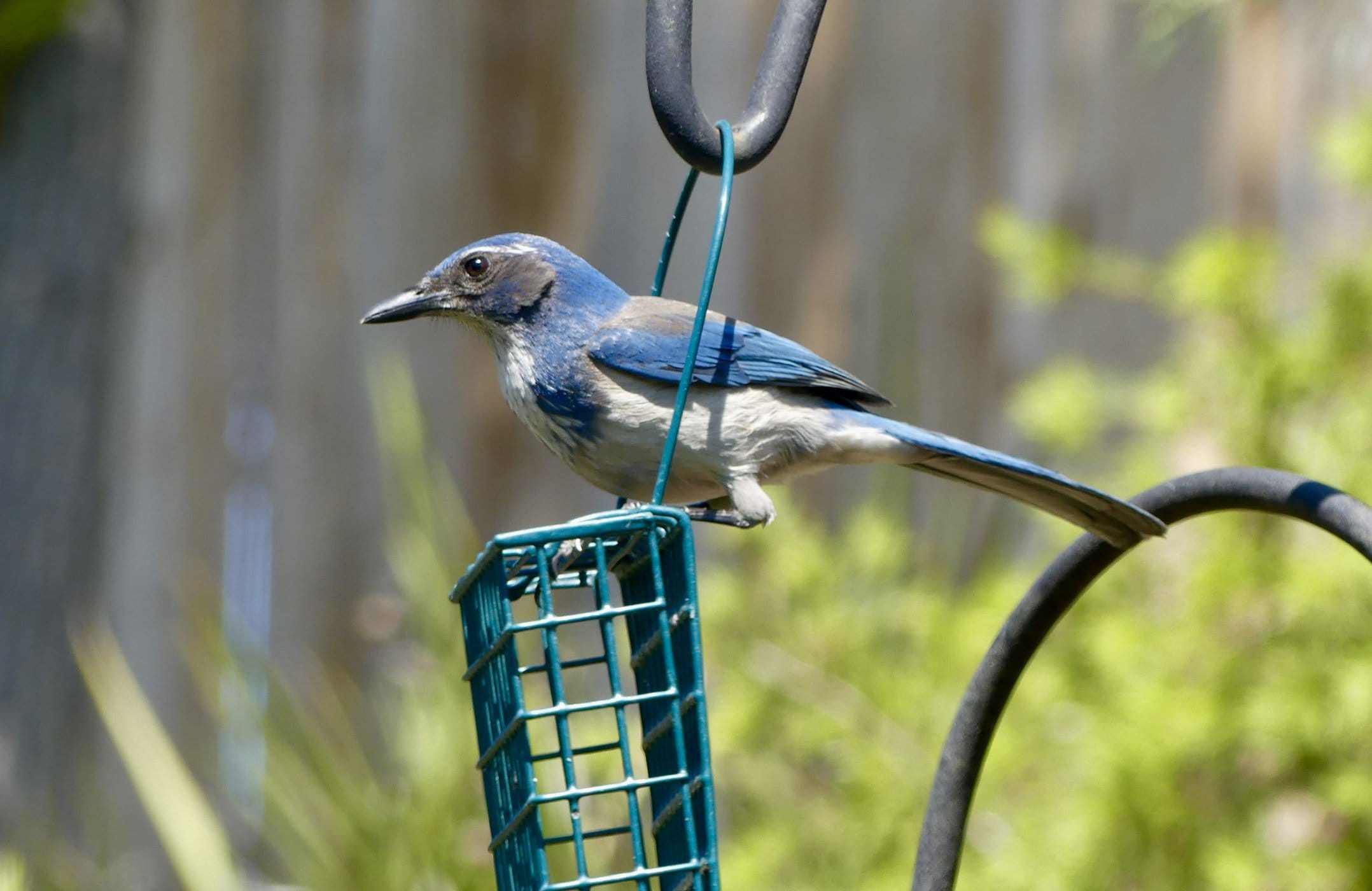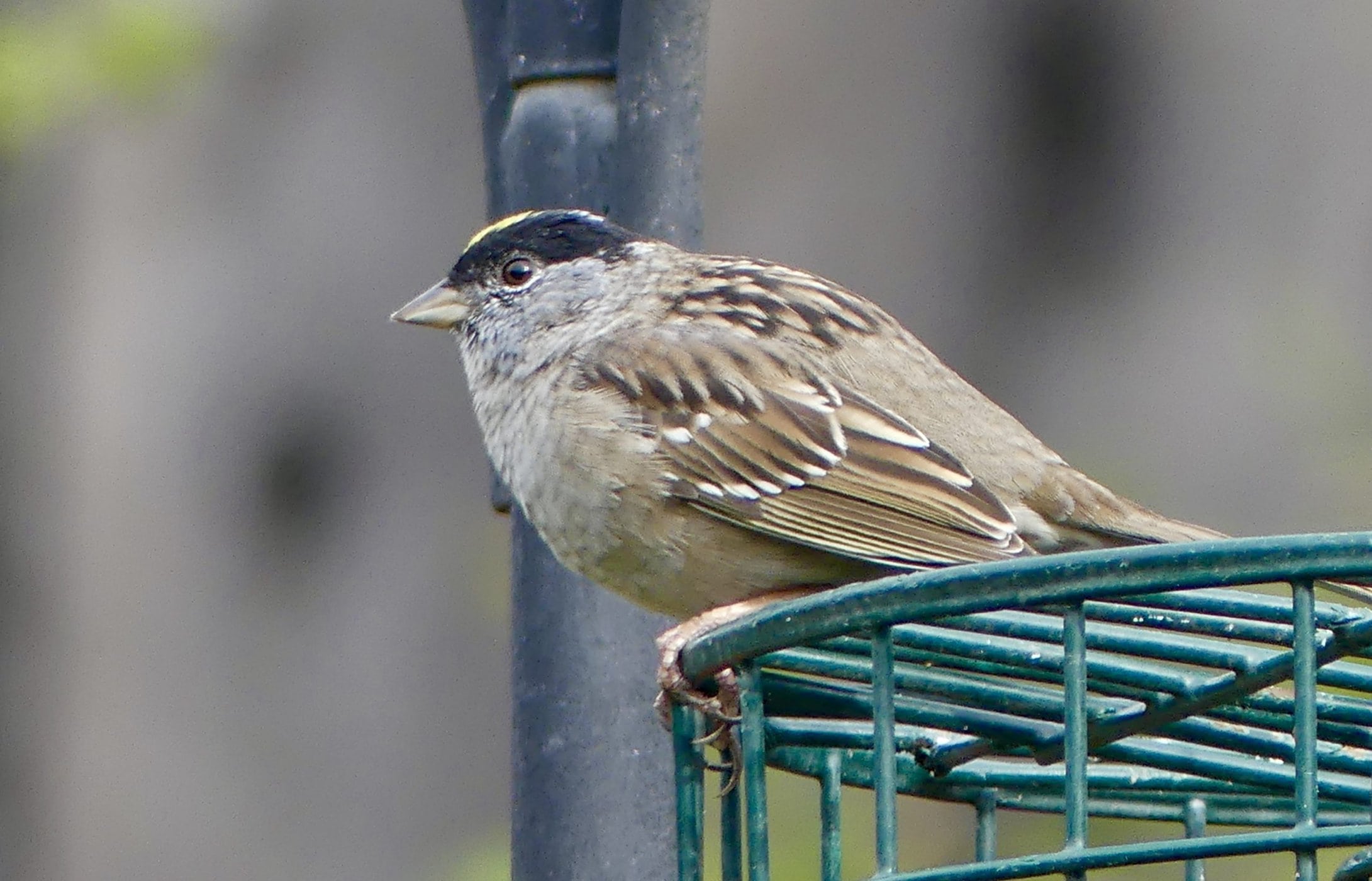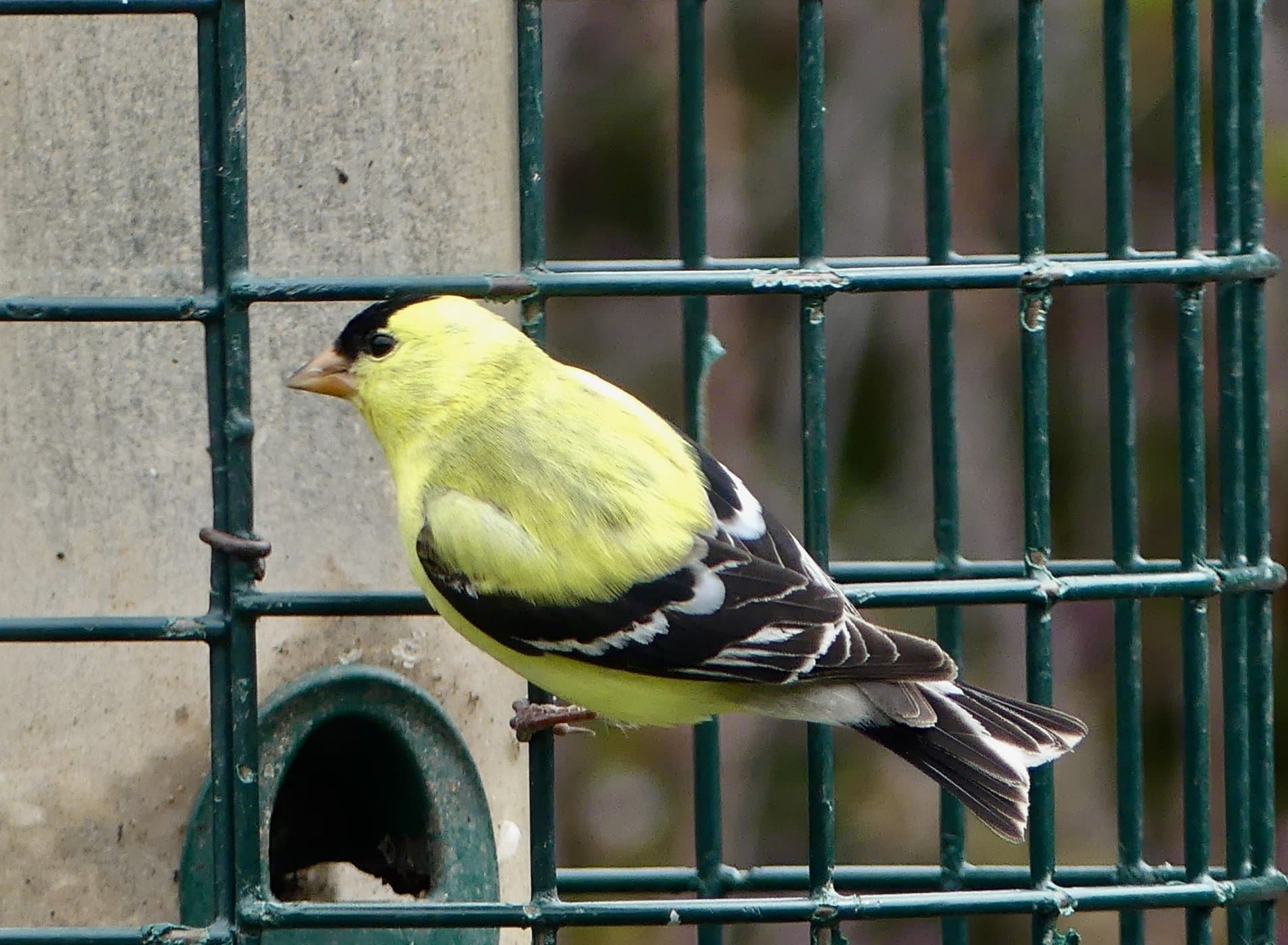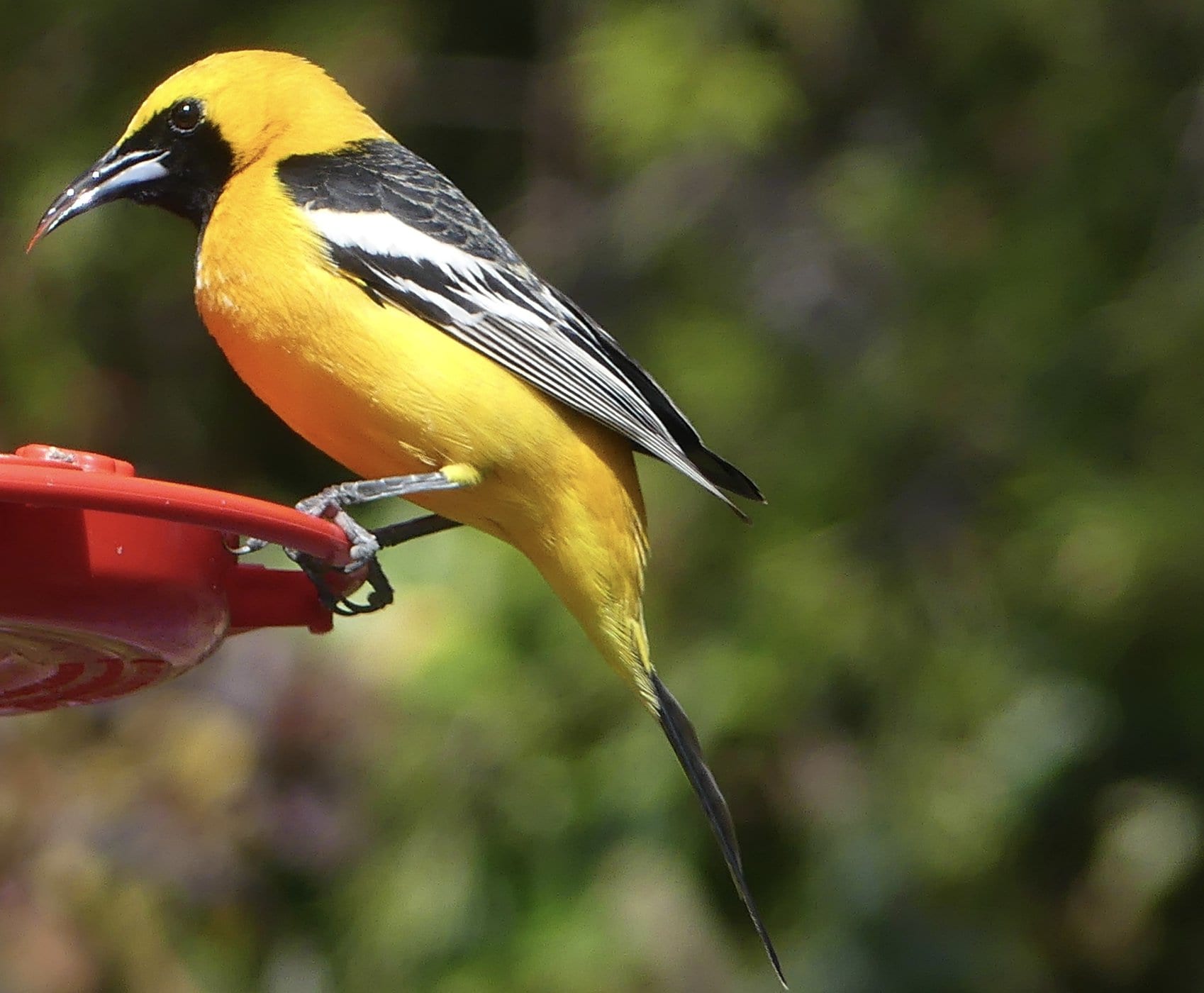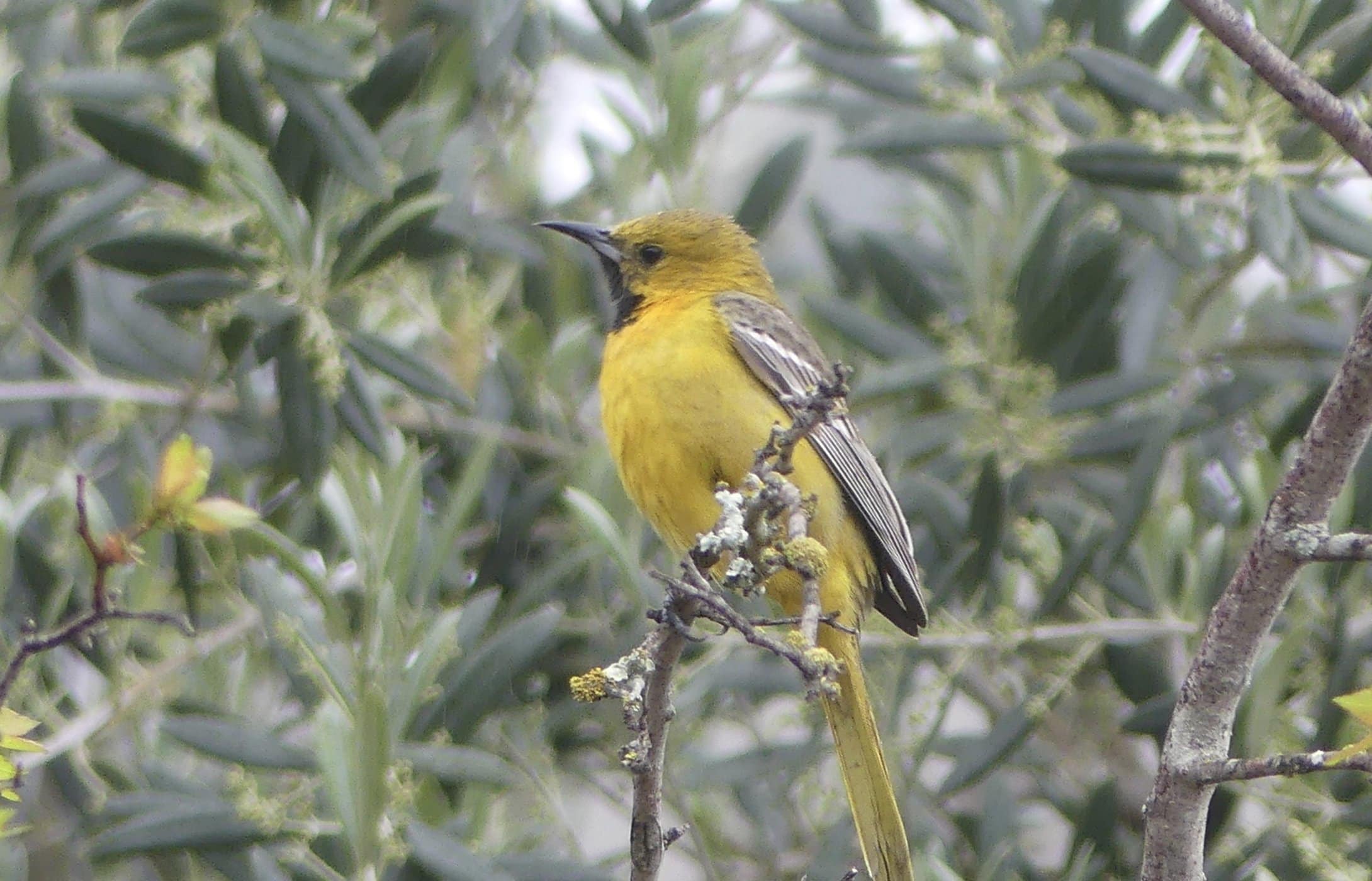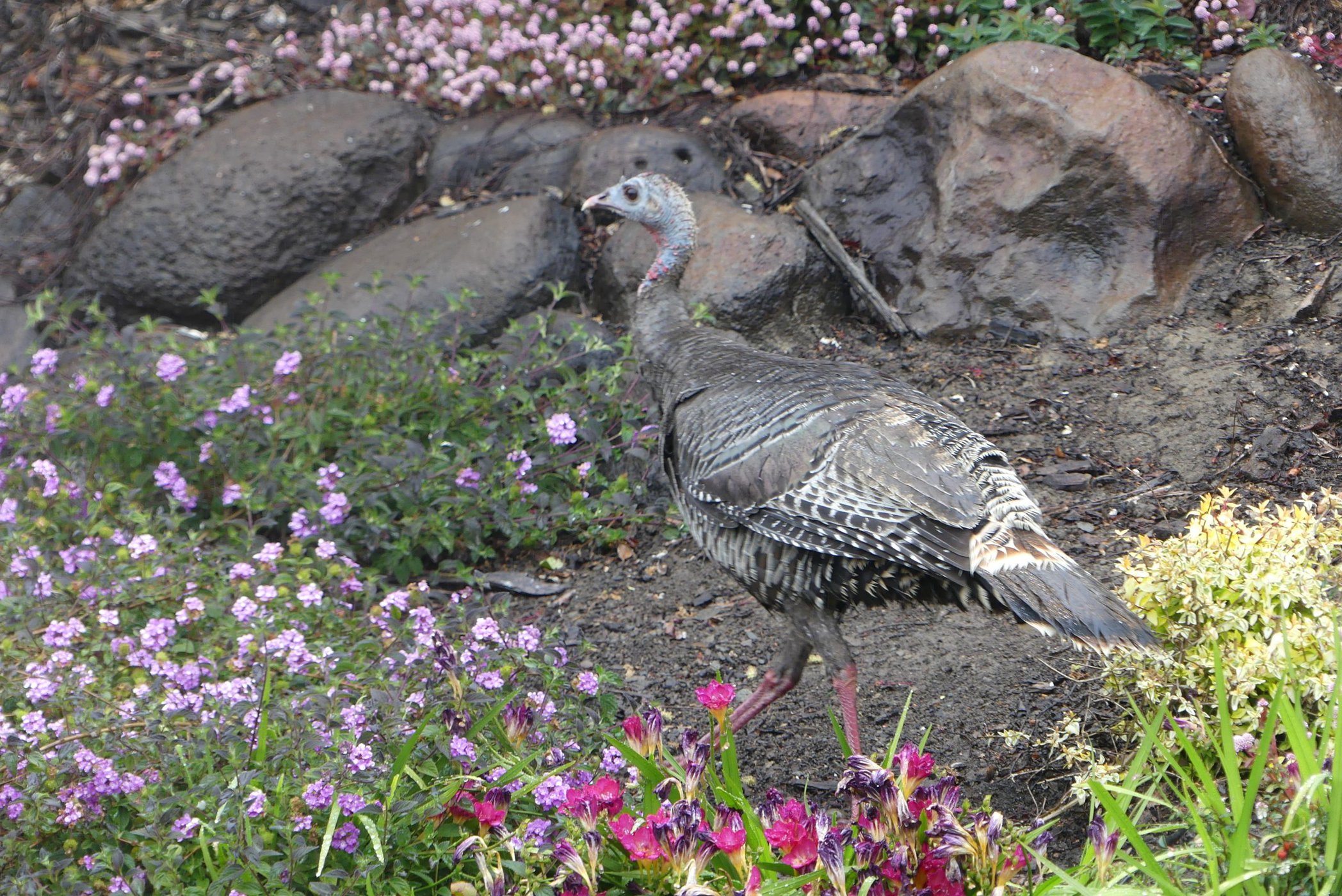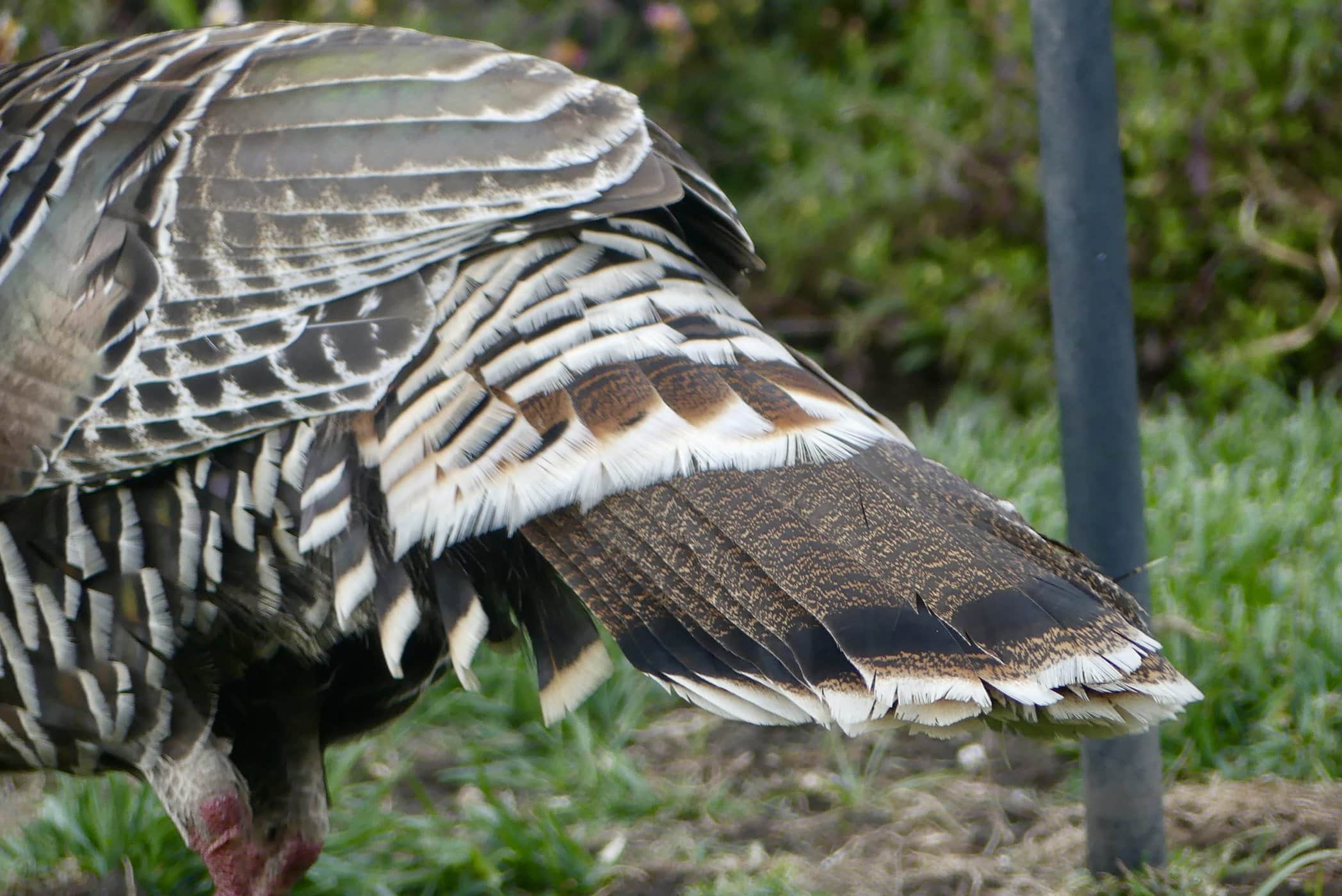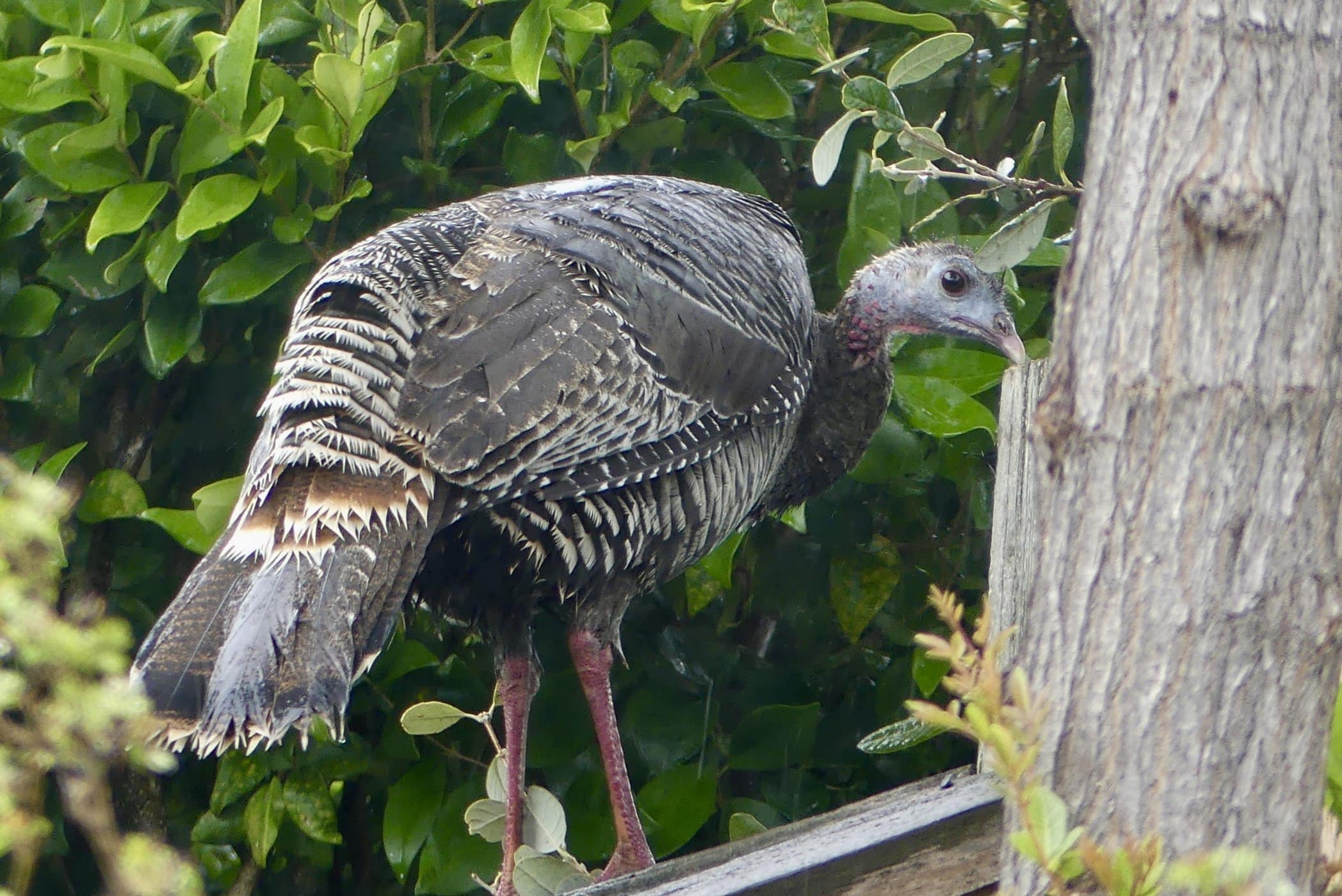Daryl Goldman: Bird Artist
Editor’s Note: Daryl Goldman is one of many talented artists whose work is featured in Golden Gate Bird Alliance’s first-ever online bird art auction, which runs from May 17 through June 1, 2020. We hope you will support Daryl, all of our artists, and GGBA by purchasing their beautiful work.
By Ilana DeBare
Daryl Goldman’s creation of mixed media art boxes began long, long before her love of birds.
“I come from a very creative family and art has always been part of my life,” Goldman said. “As a child, I made more than my share of dioramas for school projects. As an adult, I was drawn to the art boxes of Joseph Cornell and the personal altars of Frieda Kahlo.”
Goldman, an Oakland resident, was a psychologist in private practice for 33 years. She turned to creating art boxes as a way to process her own feelings after a day of seeing clients.
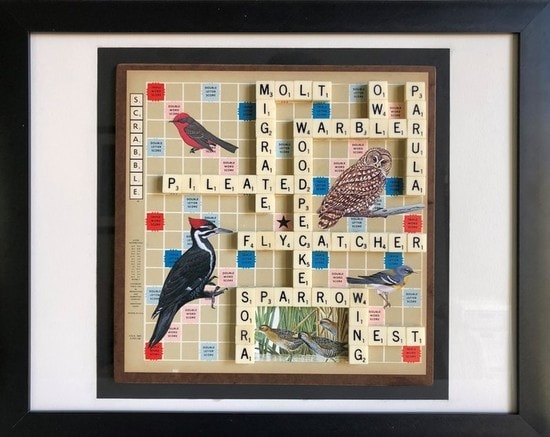 Pileated Scrabble by Daryl Goldman, one of her two mixed-media works for sale in the auction
Pileated Scrabble by Daryl Goldman, one of her two mixed-media works for sale in the auction
“I found it helpful to make a three-dimensional representation of themes my patients were struggling with, such as having hope, or how to take care of your own needs and care about the environment too,” she said.
In 2010, after years of trying, her wife Jeanette Nichols finally managed to hook Goldman on birdwatching with a trip to the Central Valley to see Sandhill Cranes taking flight.
“I’d resisted it for 12 years but something clicked and my brain has never been the same,” Goldman said.
As she got more and more engaged with birding—including taking Golden Gate Bird Alliance’s year-long Master Birder class in 2016—Goldman started incorporating bird themes into her artwork.
“When my passion and/or obsession with birding took over my brain, more birds made their way into my art,” she said. “My current work, which I call ‘Birds with Words,’ was inspired by my wife’s relationship with Scrabble. (I call Scrabble her ‘other wife.’)”
One of her two works in the Golden Gate Bird Alliance auction is a Scrabble-based mixed-media piece. She uses vintage 1950s wooden Scrabble tiles to spell out bird-related words, and juxtaposes those words with images of birds from old field guides.
“Words, birds, redundancy [of images and words], and humor—I couldn’t be happier,” she said.
Goldman’s other work in the auction is a diorama with a light-hearted take on eBird rare bird postings that will hit home with many birders.…

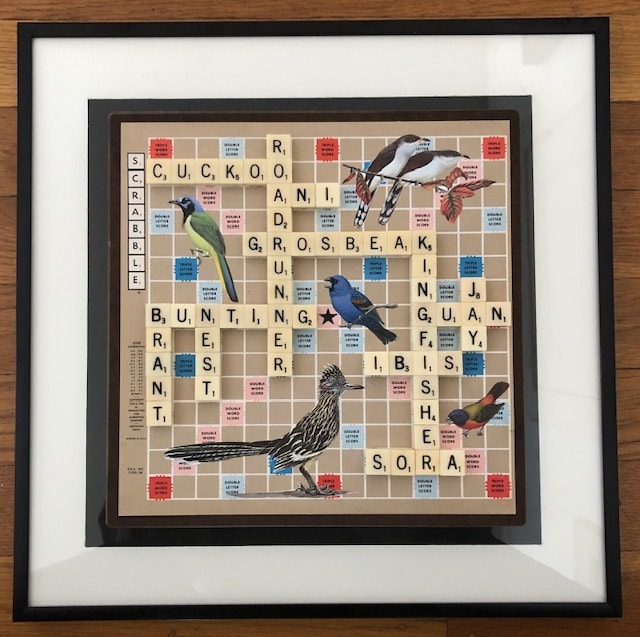
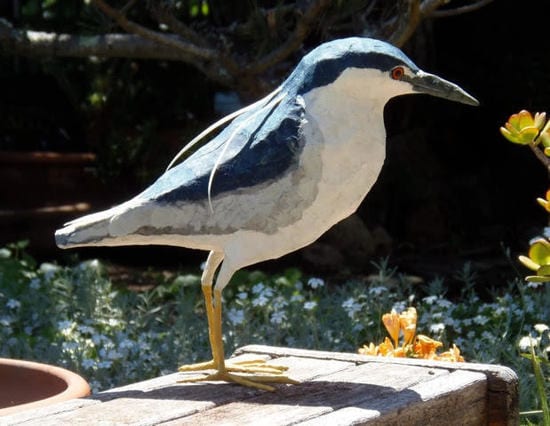
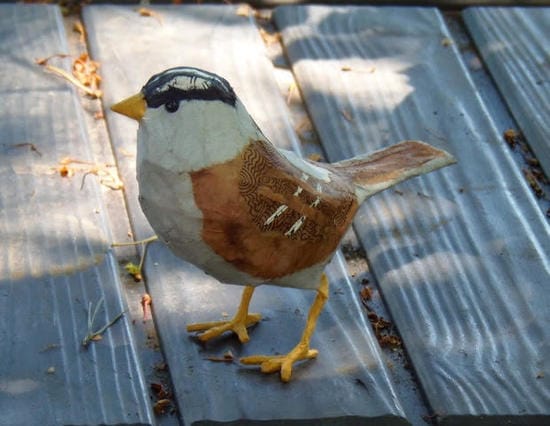 White-crowned Sparrow, one of three works by Nancy Overton in the auction
White-crowned Sparrow, one of three works by Nancy Overton in the auction
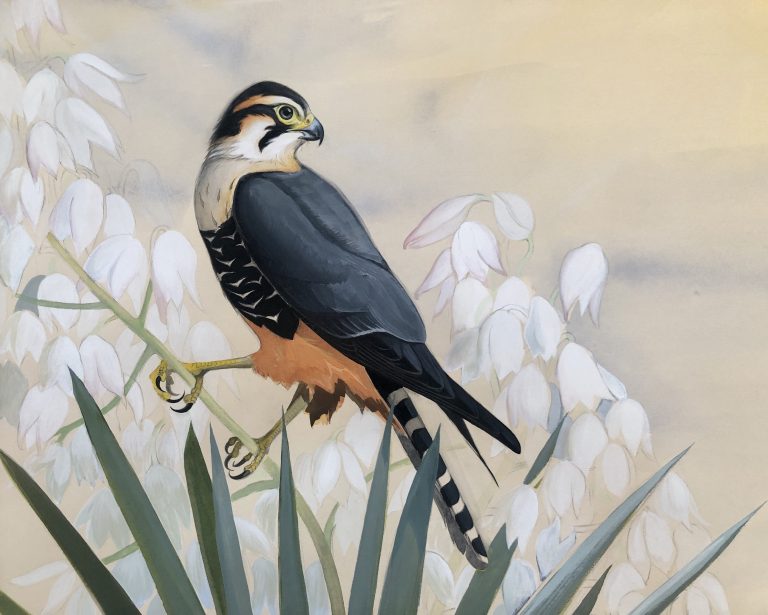
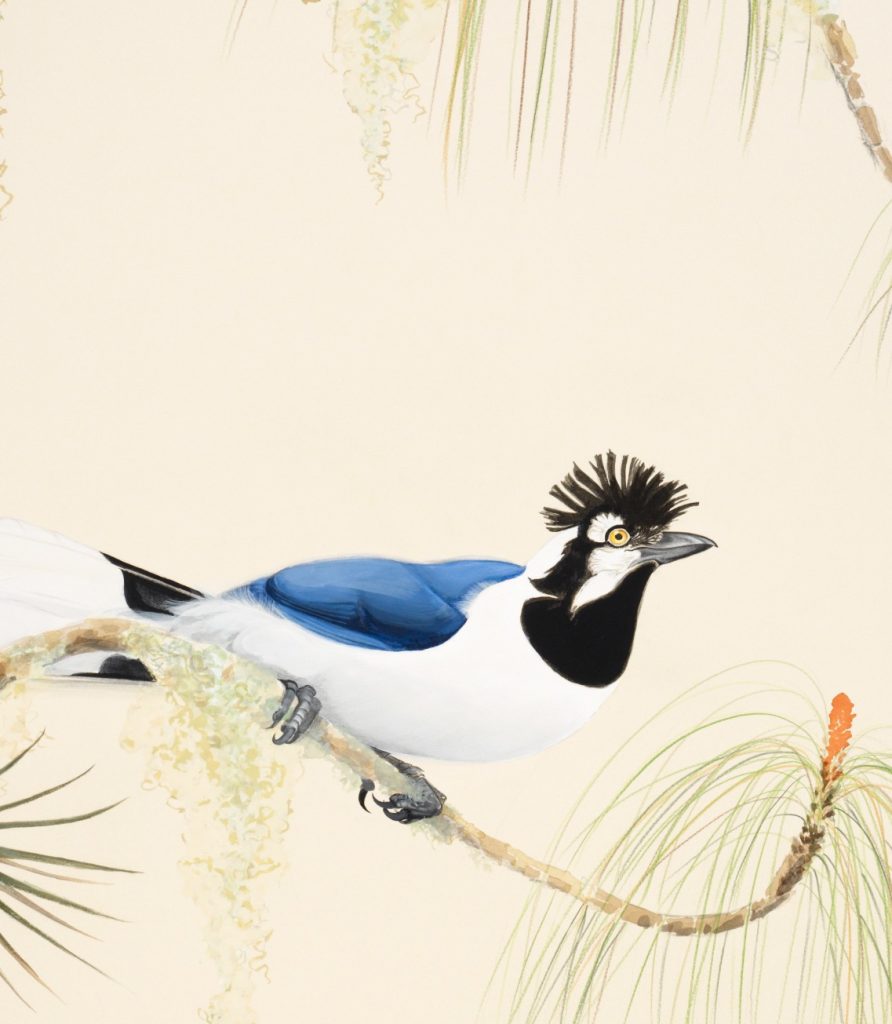 Tufted Jay by David Tomb
Tufted Jay by David Tomb
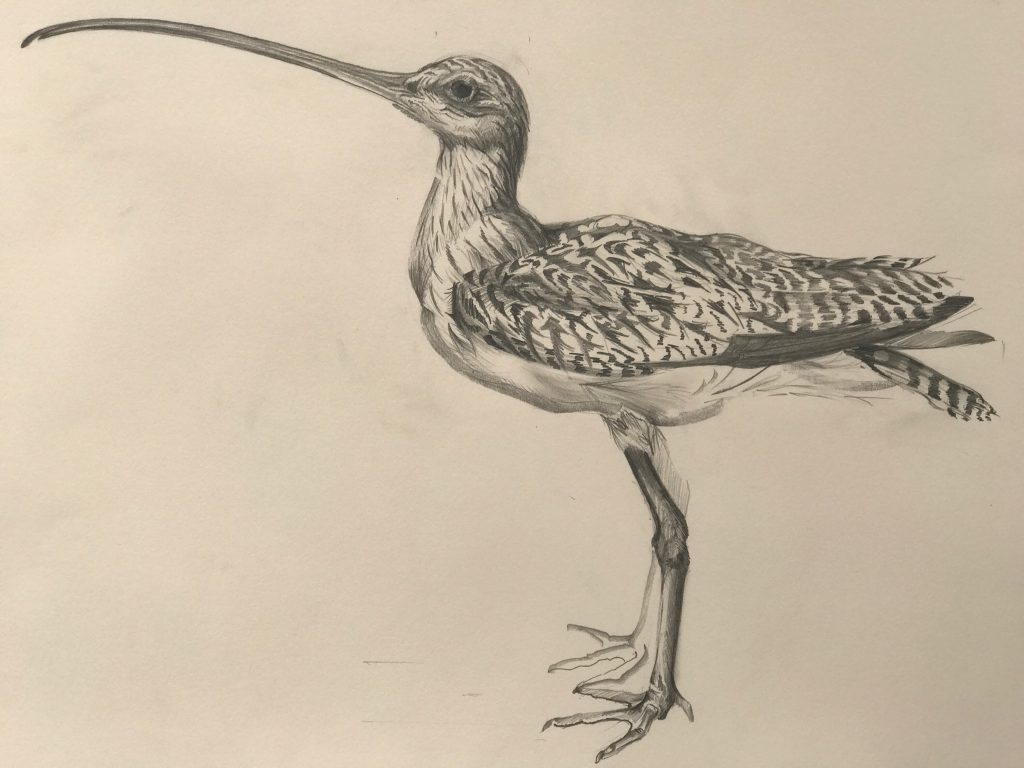 Long-billed Curlew, one of David’s many bird drawings.
Long-billed Curlew, one of David’s many bird drawings.
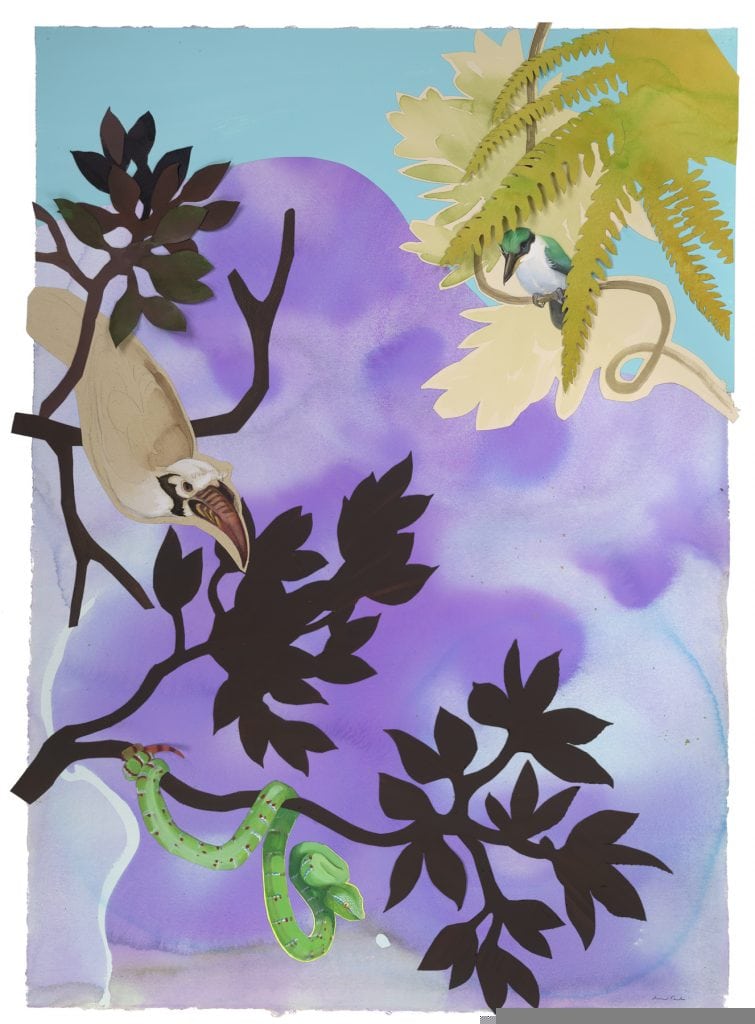 “Odd Job” (Wagler’s Pit Viper with Mindanao Tarictic Hornbill and Collared Kingfisher)
“Odd Job” (Wagler’s Pit Viper with Mindanao Tarictic Hornbill and Collared Kingfisher)
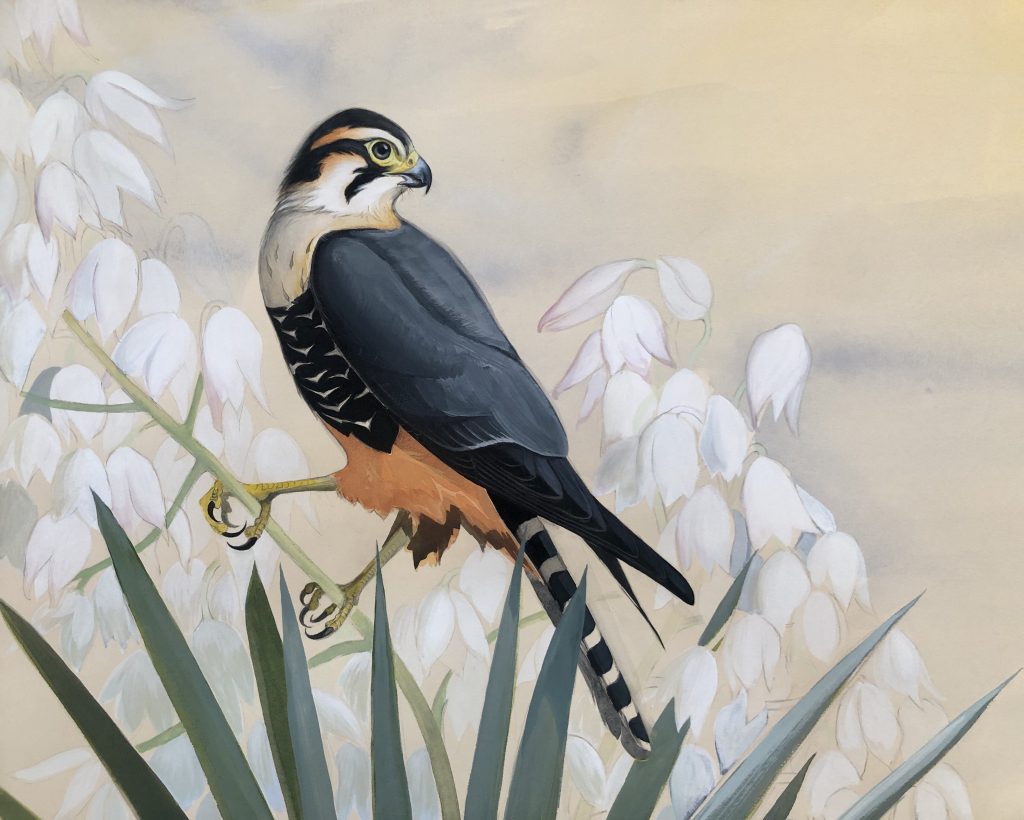 Aplomado Falcon by David.
Aplomado Falcon by David.
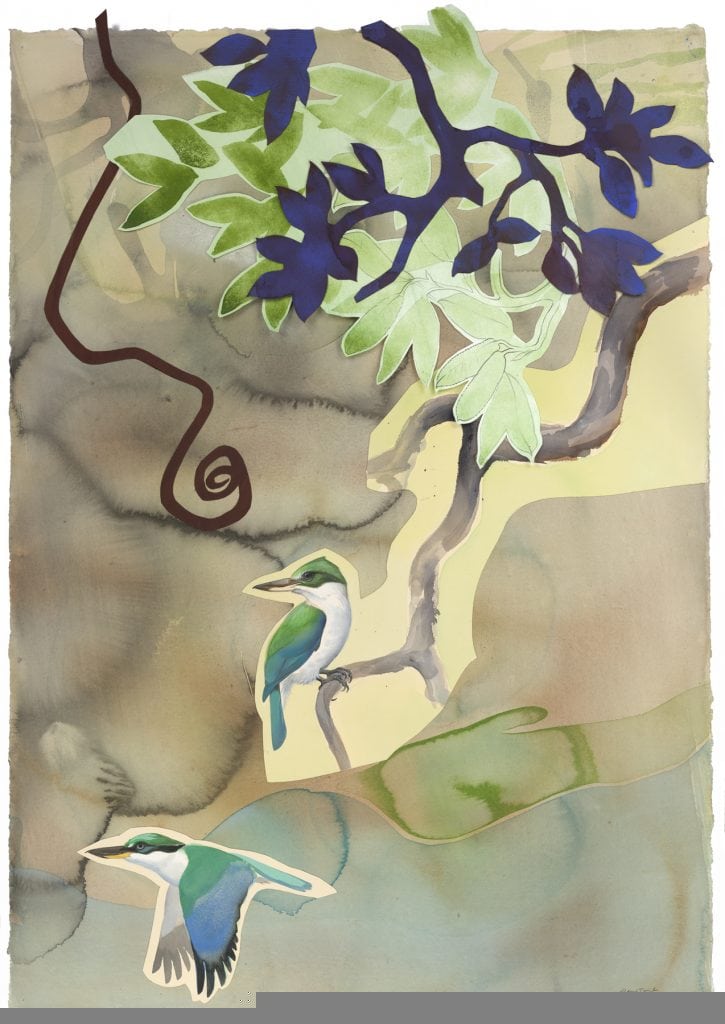 “On Demon Pond” (Collared Kingfishers) painted paper cutout collage
“On Demon Pond” (Collared Kingfishers) painted paper cutout collage
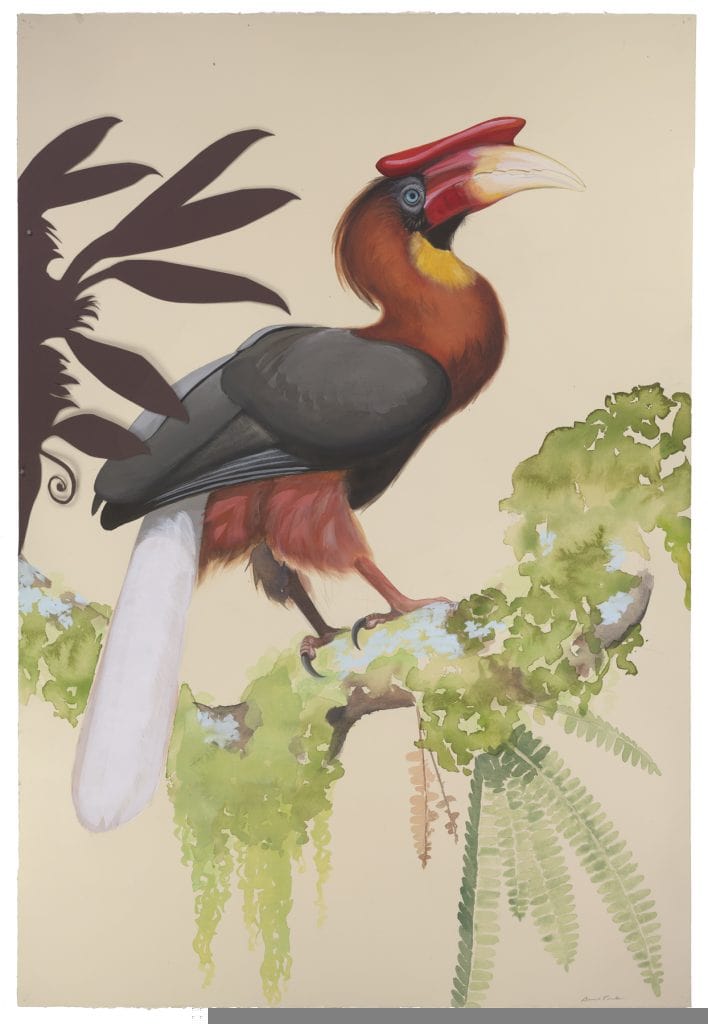 Rufous Hornbill, Collection: US Embassy, Manila, Philippines
Rufous Hornbill, Collection: US Embassy, Manila, Philippines
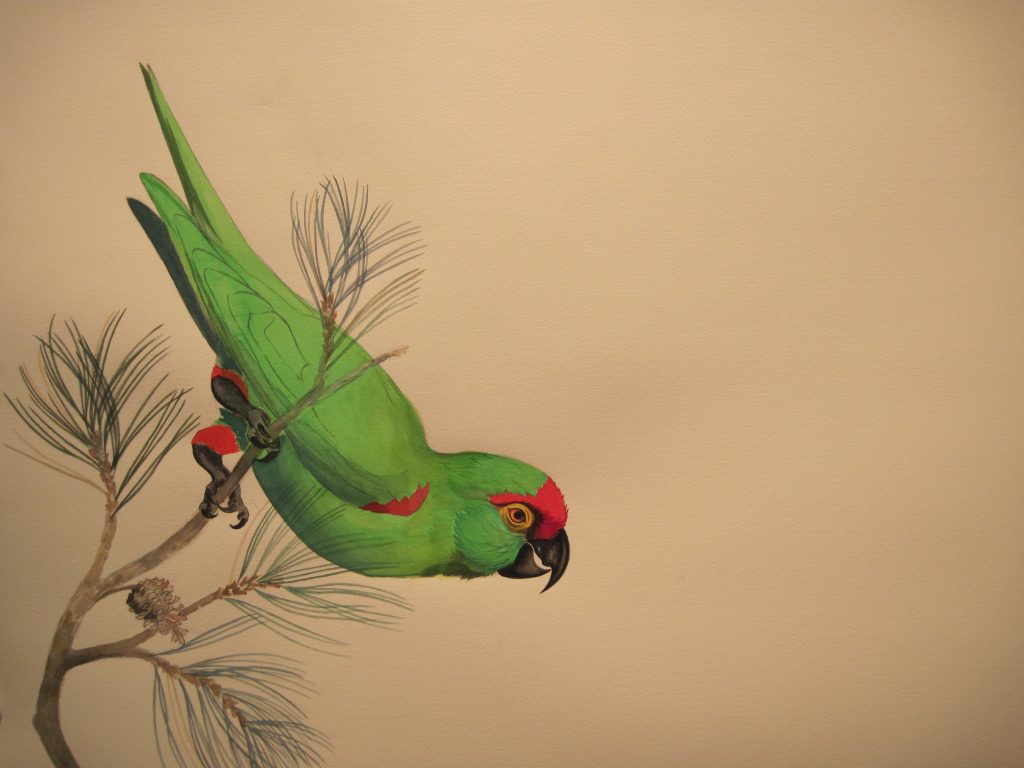 Thick-billed Parrot by David Tomb
Thick-billed Parrot by David Tomb
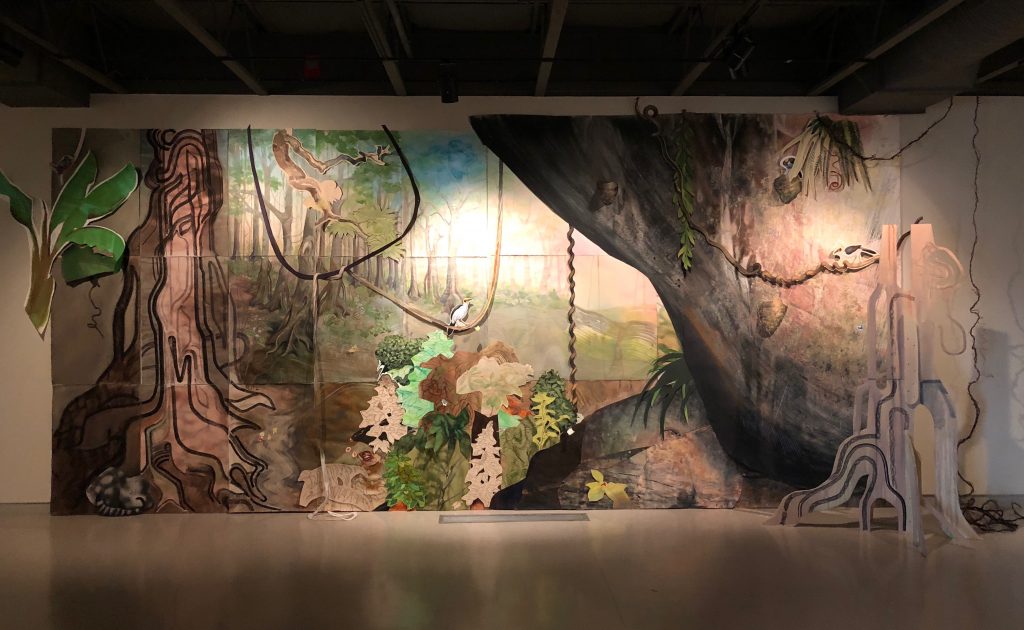 Rock and Rockfowl, painted paper cut-out diorama of Ghana rainforest featuring Yellow-headed Picathartes (Rockfowl), 28 feet wide by 12 feet high. Installed at Fresno Art Museum, 2018, Solo exhibition: Rockfowl and other Wonders
Rock and Rockfowl, painted paper cut-out diorama of Ghana rainforest featuring Yellow-headed Picathartes (Rockfowl), 28 feet wide by 12 feet high. Installed at Fresno Art Museum, 2018, Solo exhibition: Rockfowl and other Wonders
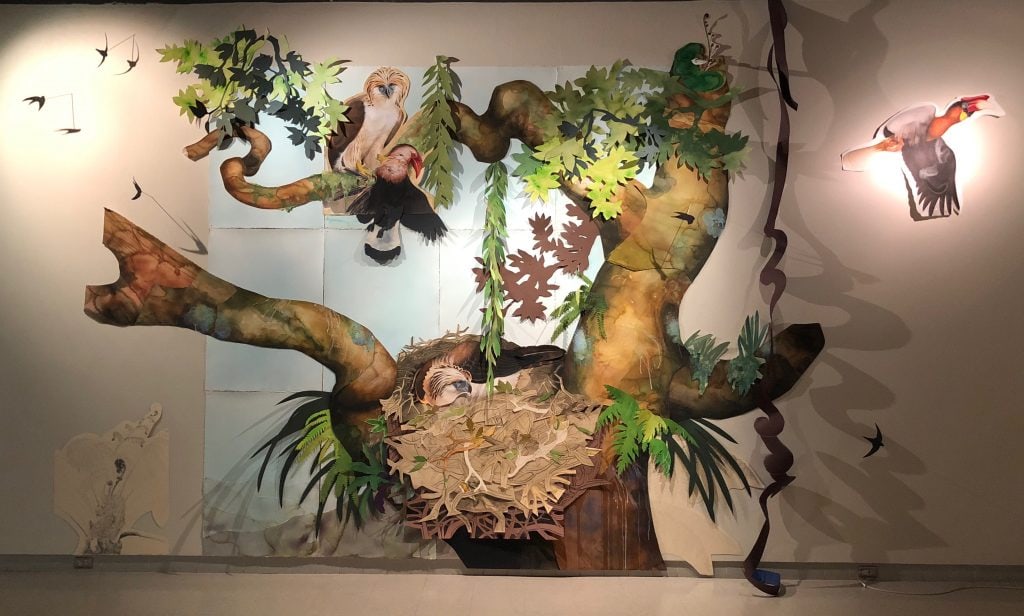 Installation: Philippine Eagle/Haribon nest, painted cut-out paper diorama, Fresno Art Museum, 2018, 25 feet wide by 12 high
Installation: Philippine Eagle/Haribon nest, painted cut-out paper diorama, Fresno Art Museum, 2018, 25 feet wide by 12 high
 Installation detail: Philippine Eagle nest
Installation detail: Philippine Eagle nest
 Detail, Picathartes, Rock and Rockfowl.…
Detail, Picathartes, Rock and Rockfowl.… 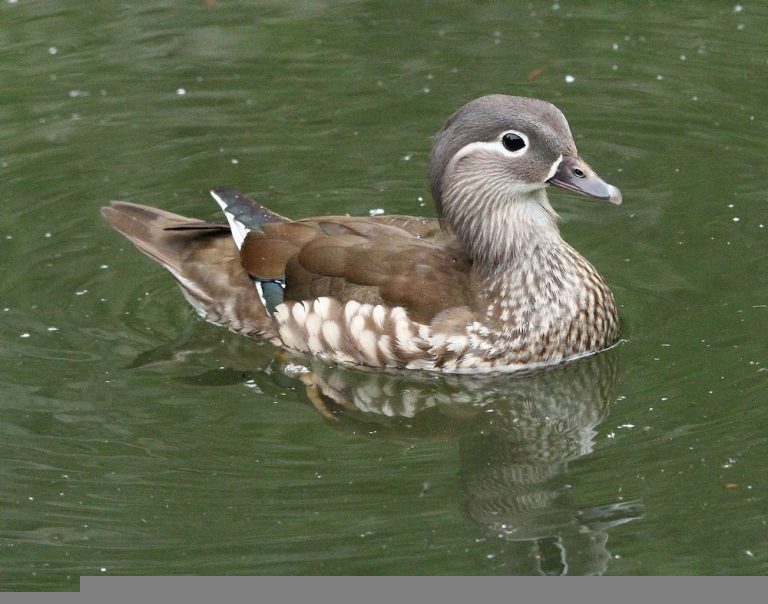
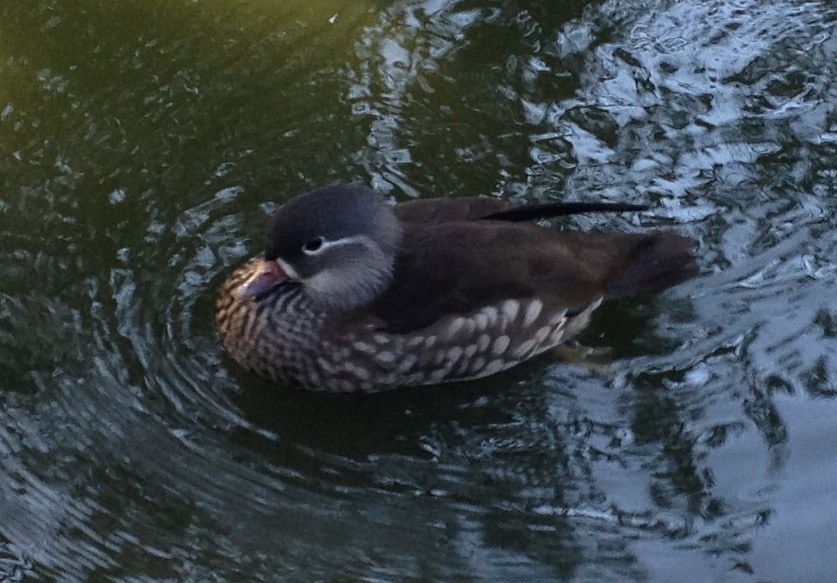 One of the first iPhone photos taken of Mandy, the Mandarin Duck near the Boathouse at Stow Lake, Golden Gate Park, Monday, November 17, 2014 at 10:11 am.
One of the first iPhone photos taken of Mandy, the Mandarin Duck near the Boathouse at Stow Lake, Golden Gate Park, Monday, November 17, 2014 at 10:11 am.
